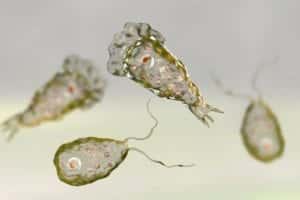Drug Against Brain-Eating Amoebae – New Drug Leads
New drug leads to fight the deadly but rare brain-eating amoebae using quinazolinone derivatives.
Harmful forms of encephalitis can be caused by brain-eating amoebae and more than 95% of people die when they are infected with this devastating and rare infection. Currently, there is not a single effective drug available to fight these microbes despite the high mortality rate. However, now, some new compounds showing potential in the laboratory as treatments, are being designed by researchers.
Two types of amoebae that can cause granulomatous amoebic encephalitis and primary amoebic meningoencephalitis are Balamuthia mandrillaris and Naegleria fowleri. These single-celled microorganisms enter the body through open wounds or through the nose as they live in water and soil. They can then move to the central nervous system, where these pathogens destroy brain cells.
Patients were given high doses of many different antimicrobials in the very few cases that have been treated successfully. These drugs at high levels generally lack specificity and can toxic effects.
At the American University of Sharjah, the United Arab Emirates, Ruqaiyyah Siddiqui, and her colleagues used quinazolinones to make progress toward a single drug. Against a wide spectrum of human foes, these compounds are effective, including cancer, parasites, fungi, viruses, and bacteria. But against brain-eating amoebae, these compounds have never been tested.

Credit: Kateryna Kon/Shutterstock.com
Around 34 new quinazolinone derivatives were synthesized by the researchers and their effects on B. mandrillaris and N. fowleri were studied. Some of the newly synthesized compounds were effective in limiting the harm the pathogens could do to human cells in a Petri dish and were effective at killing the microorganisms. The activity of the derivatives was enhanced by attaching silver nanoparticles to them, in some cases. Their toxicity for human cells was low and the most effective compounds contained methyl or methoxy groups, and chlorine. For drug development studies, the researchers said that their results showed quinazolinones effective and they are a good choice.
The research study in ACS Chemical Neuroscience.
Drug against brain-eating amoebae – Source






















